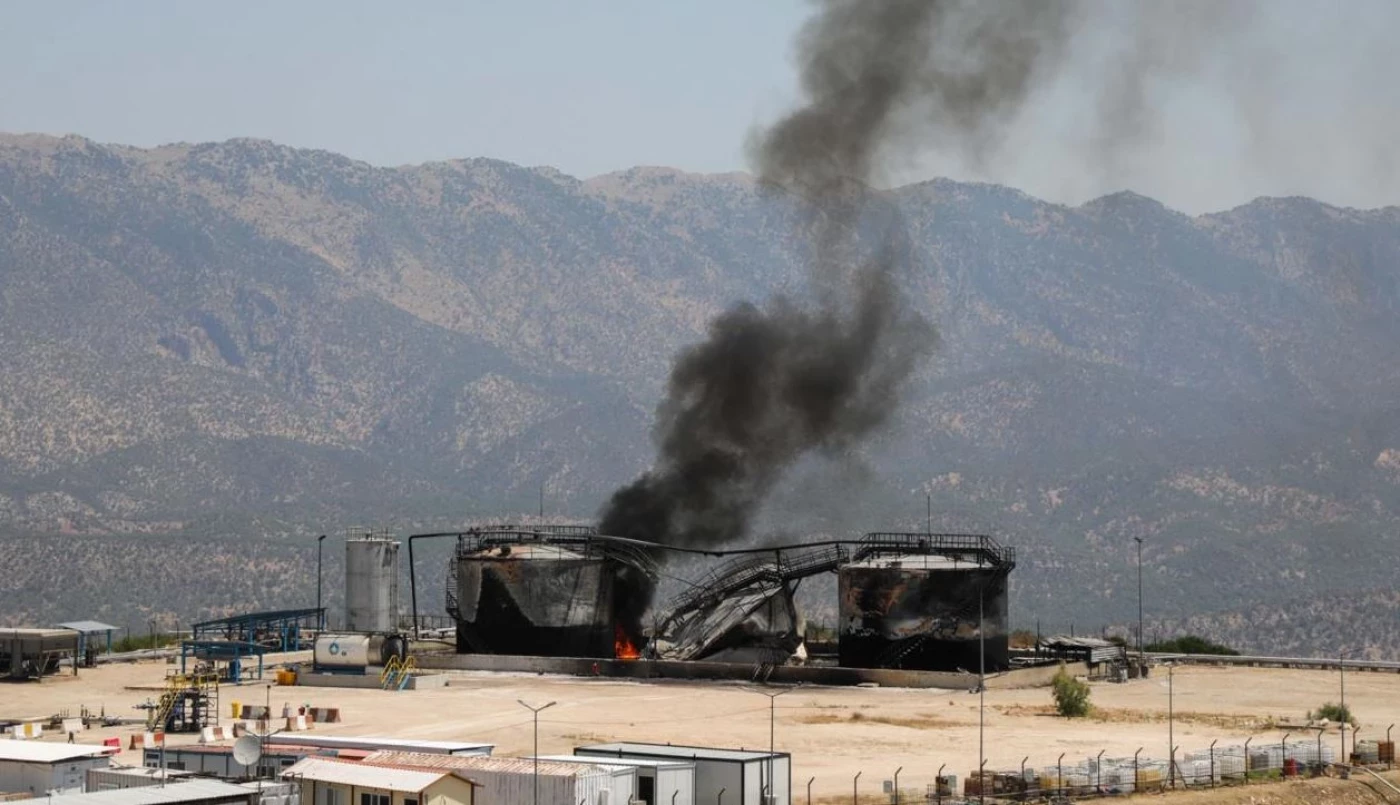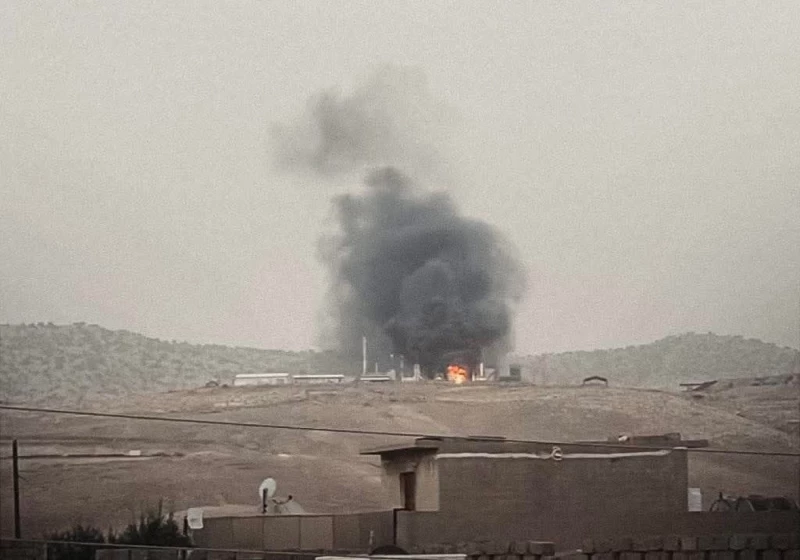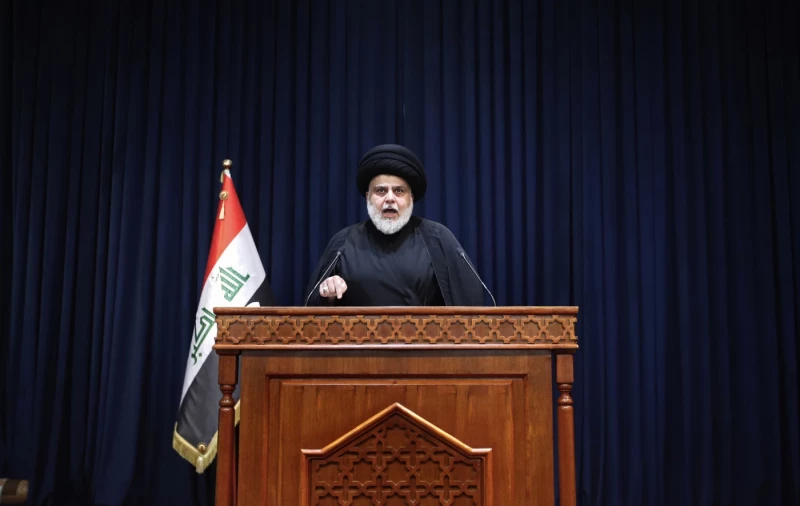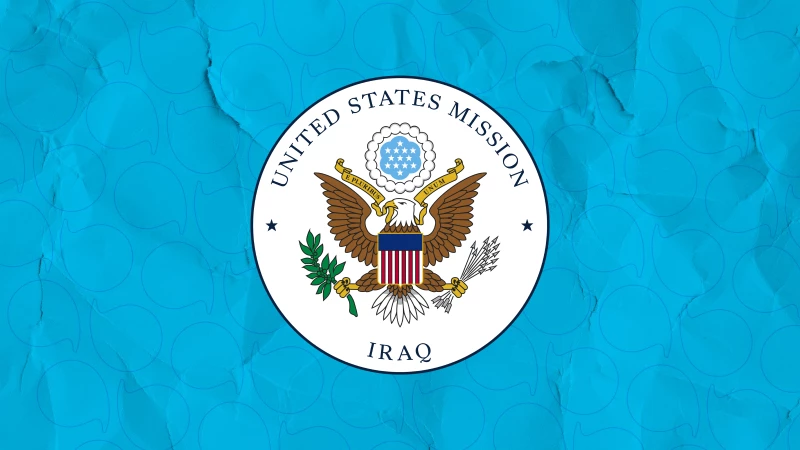ERBIL, Kurdistan Region of Iraq - After a series of drone attacks hit sites across Iraq’s Kurdistan Region, including oil fields, Iraqi security forces have launched a wide-scale search in the Hatra desert, covering western Nineveh and Salahaddin provinces. The operation aims to locate suspected launch sites believed to be used for threatening Iraq’s security and stability. It comes in response to repeated Kurdish government calls to protect the region and pursue those behind the strikes.
The mission, carried out by the Counter-Terrorism Service and Popular Mobilization Forces (PMF), included searches of warehouses, caves, and valleys suspected of hostile activity. The campaign comes as drone attacks have repeatedly targeted Kurdistan’s oil infrastructure.
The latest wave of attacks began on June 24, when Baghdad Operations Command reported an unidentified drone strike at Taji military base, north of the capital. The group responsible remains unknown. Meanwhile, Erbil International Airport has seen several attempted drone strikes.
The search operation was launched as the Armed Forces spokesperson, Sabah al-Numan, announced that authorities had reached “important and decisive findings” in an investigation into drone attacks targeting Iraqi military radar systems.
Numan said in a statement that, acting on orders from Prime Minister Mohammed Shia’ al-Sudani, a high-level committee of senior officers and experts had investigated the incidents. He said the drone strikes were coordinated and targeted defensive radar systems at multiple bases across Iraq. The drones were found to be foreign-made, carrying warheads of different sizes. Investigators have identified the origin of the drones.
US reports and new radar systems
A security source told The New Region that the inspection campaign, which involved PMF shrine units in western Nineveh, followed intelligence reports from the US Embassy in Baghdad and the international coalition.
“The commander-in-chief’s office received reports showing that the drones were launched from the desert in Jazirat Nineveh and flown toward various areas in Kurdistan,” the source said.
He added, “US reports pinpointed the launch area between Talul Ba’aj and the Hatra desert, along the Baghdad road, and advised the government to act quickly.”
Following the reports and calls from the Kurdistan Regional Government, the commander-in-chief’s office tasked the Counter-Terrorism Service, the Intelligence Agency, and the Ansar al-Marji’iyya Brigade with carrying out a broad inspection campaign. The mission included searching for drone launch remnants, installing thermal cameras, and deploying three new radars.
Another source said that a Counter-Terrorism unit was allowed to inspect two PMF brigades in Nineveh, Brigades 25 and 44, with approval from PMF operations commander Khudair al-Matroohi. The inspection was carried out without prior notice.
In a related statement, Salah al-Musawi, the media official for Ansar al-Marji’iyya, said that his brigade carried out a two-day inspection campaign in the area, under orders from the commander-in-chief.
He said the operation included Brigades 25 and 44, the Counter-Terrorism Service, Military Intelligence, and the Iraqi Army, and covered the region between al-Hadar and the Baghdad road.
“We didn’t find any launch platforms or signs of drone activity,” Musawi said. “The searched area was between 30 and 60 kilometers.”
He explained that the brigade operates thermal cameras with a 5-kilometer range and has one radar with a 30-kilometer range, which he said is not enough to monitor the vast Jazirat Nineveh desert. He stressed the need for a stronger surveillance system.
On the Syrian border, Musawi clarified that it lies about 170 kilometers away from their brigade’s location and is not within their area of operations. He emphasized that his forces follow only the commander-in-chief’s orders and do not engage in politics.
This month, the Kurdistan Region of Iraq has seen a rise in drone attacks on oil and military targets. These include the Sarsink oil field in Zakho, the Hand Oil field in Sheikhan (Duhok), and the DNO field in Faysh Khabur, as well as other key locations.
Investigations have been promised into other attacks, including those on Imam Ali Airbase in Dhi Qar, Balad Airbase, Baiji refinery in Salahaddin, and Kirkuk Airport. Near-daily drone strikes have also continued on Erbil Airport and several Peshmerga positions, along with oil and gas sites.
Identifying the perpetrators
Security and military expert Maj. Gen. Emad Allo told The New Region that although the government has not named the group behind the drone and radar strikes, investigators have identified them.
He said the committee’s report and the search mission mark a turning point, suggesting that the group responsible could face trial. He said the perpetrators are domestic actors, and the government plans to refer them to the Iraqi courts.
Allo added that Iraqi security agencies worked quickly and used evidence, documentation, and intelligence to uncover the reasons behind the attacks, especially the focus on Kurdistan’s oil fields.
Why Hatra was chosen
Political and security researcher Brig. Gen. Saeed al-Ani (ret.) told The New Region that the drones used in the attacks were foreign-made and likely Iranian, similar to those used by Houthi forces in Yemen.
He said the desert of al-Hadar and Ba’aj was an ideal launch point because it connects to Anbar’s desert via Rawah, leading to Akashat and al-Qaim, where armed factions have large weapons stores.
He added that al-Hadar’s proximity to Mount Sinjar and the Syrian border in Nineveh makes it a suitable area for Iran-aligned groups accused of targeting Kurdistan.
According to Ani, the areas near Sinjar and the border contain weapons depots and are strategically important for these groups.
He concluded that other areas, like the Nineveh Plain, where PMF’s Brigade 30 operates, were unlikely launch points because they are too exposed and easily monitored by Kurdish forces and the Coalition. He said the more remote and less visible Nineveh desert was a more secure choice for launching the attacks.


 Facebook
Facebook
 LinkedIn
LinkedIn
 Telegram
Telegram
 X
X



